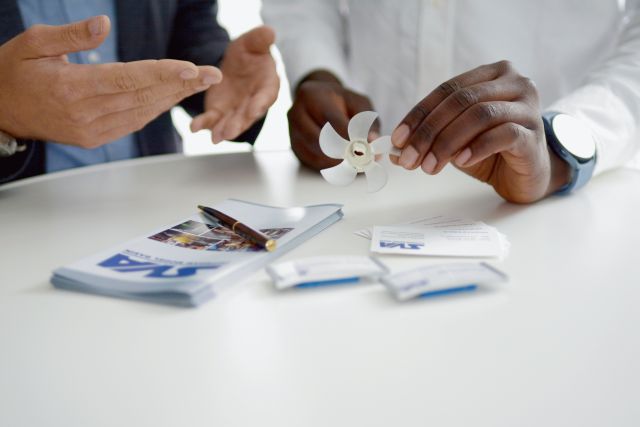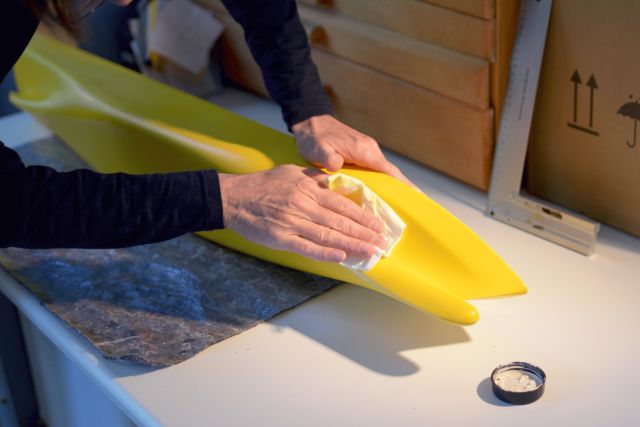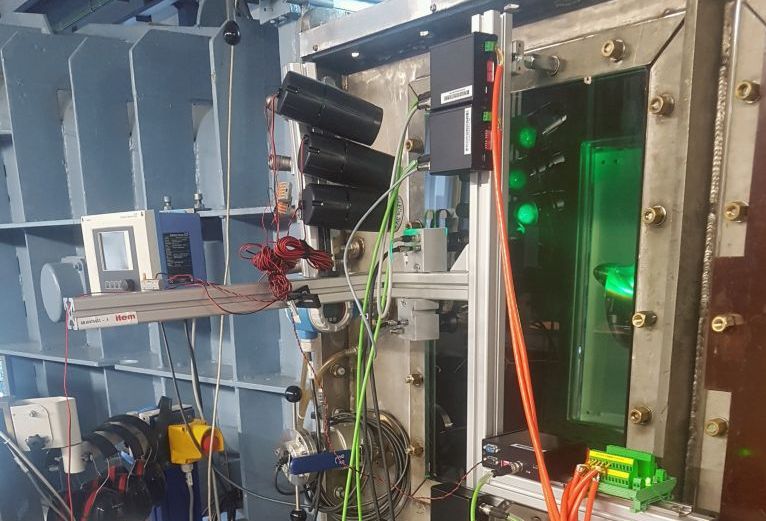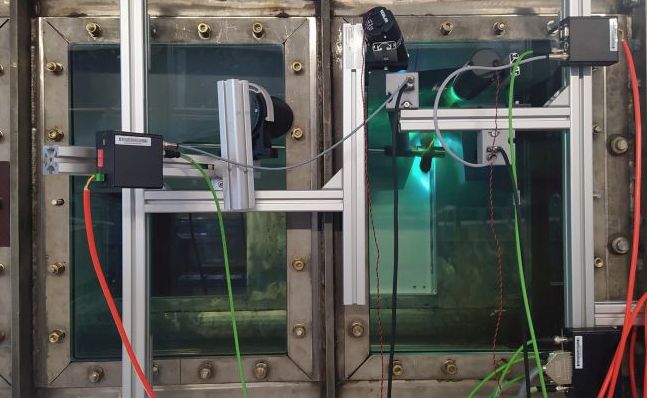Since the late 1980s, there has been renewed interest in contra-rotating propellers (CRP). Their use is particularly beneficial under high thrust load conditions. It is estimated that energy savings of up to 10% can be achieved. Therefore, a CRP used as the main propulsion system can represent an effective means of reducing CO2 emissions. Continue reading “Design and Optimization Tool for a CRP Propulsion Concept 2024 – 2026”
Author: pa
Optical Cavitation Inspection System (OCIS)
In this context, the Optical Cavitation Inspection System (OCIS) was integrated into SVA’s cavitation research as part of the “R&D Funding Program for Non-Profit External Industrial Research Institutions – Innovation Competence (INNO-KOM)” (Reg. No. IZ 49IZ210009). OCIS includes components such as the KED-Photonics® Nuclei Sizer 300 (based on HDNC technology) for measuring cavitation nuclei concentration, and a synchronized multi-camera and LED lighting system (KED-Photonics® Cavitation Imager 2.1).
Using OCIS, cavitation phenomena are synchronously recorded with multiple cameras and subsequently reconstructed in three dimensions. Image processing techniques are employed to determine the spatial extent of cavitation and the probability of its occurrence. Data on the distribution of nuclei in the water, as well as objective statistics on observed cavitation, form the basis for correlation analyses, which are critical for evaluating cavitation experiments and conducting complex cavitation simulations.
The measurement system was developed through continuous research and development within the collaborative R&D projects KonKav and HiOcav, funded by the BMWi (Federal Ministry for Economic Affairs and Energy). These efforts targeted key challenges in current cavitation research, such as determining the nuclei spectrum in water and resolving the temporal and spatial extent of cavitation. SVA actively participated in these projects, contributed significant foundational work, and gained extensive experience in the application and use of the technology.
BREWEL – Simulation of Ships with Breaking Waves
2023 – 2026
During the design phase, numerical methods are used to determine resistance and optimize the hull lines. Based on this data, a performance prognosis is created, taking into account power reserves. Once the basic design parameters, such as length, width, draft, propulsion unit, etc., are fixed, the construction costs are largely determined. A correct performance prognosis during the design phase is therefore essential for the profitable execution of the project. Continue reading “BREWEL – Simulation of Ships with Breaking Waves
2023 – 2026″
ActiveRudder – Innovative Propulsion and Manoeuvering System 2023 – 2025
The European Union’s “Green Deal” aims for the EU to achieve climate neutrality as an economic region by 2050. To this end, greenhouse gas emissions from transportation are to be reduced by 90%. Additionally, there are port authorities that offer fee discounts to ships entering with lower exhaust and/or noise emissions. Continue reading “ActiveRudder – Innovative Propulsion and Manoeuvering System 2023 – 2025”
SKEG – Impact of Skeg Alternatives on Resistance and Yaw Stability
2022 – 2025
Preliminary investigations have shown that skegs have a significant impact on ship resistance. Initial studies on the resistance of a twin-screw vessel confirm this trend. However, the skeg plays a crucial role in course stability and the effort required for construction and docking of ships. Therefore, alternative systems with lower resistance need to be developed, taking these factors into account. Continue reading “SKEG – Impact of Skeg Alternatives on Resistance and Yaw Stability
2022 – 2025″
SMM 2024: Preparations are in Full Swing!
Dear business partners and visitors,
SMM is just around the corner again this year! Our preparations are in full swing and we can’t wait to present our latest innovations and technologies as well as our know-how in the maritime industry.
Visit us at our stand B4.EG.102 to find out more about our current projects, products and services. Our team is looking forward to your visit.
We are also happy to welcome students to our stand to discuss opportunities for internships, final theses or career entry.
We look forward to your visit!



